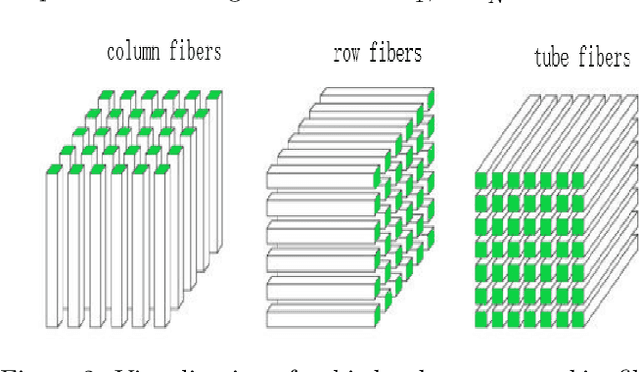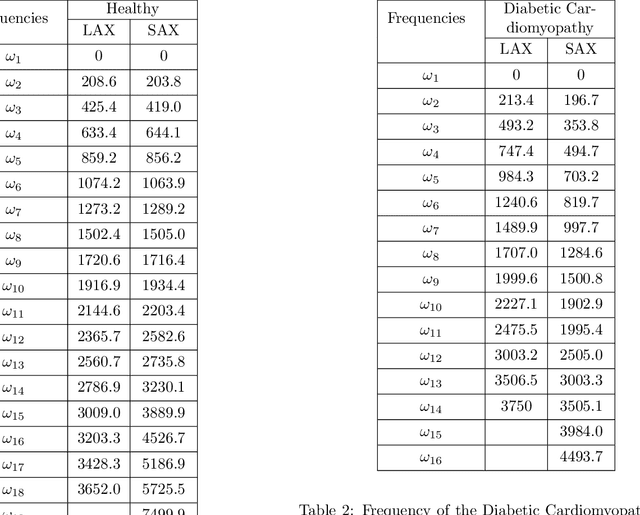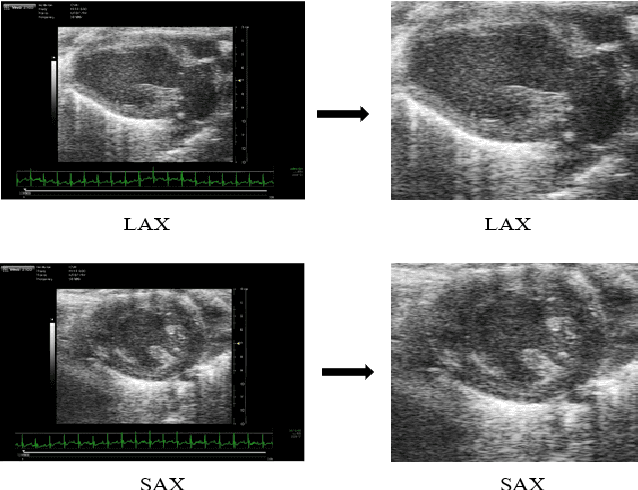Eusebio Valero
Aerodynamic and structural airfoil shape optimisation via Transfer Learning-enhanced Deep Reinforcement Learning
May 05, 2025Abstract:The main objective of this paper is to introduce a transfer learning-enhanced, multi-objective, deep reinforcement learning (DRL) methodology that is able to optimise the geometry of any airfoil based on concomitant aerodynamic and structural criteria. To showcase the method, we aim to maximise the lift-to-drag ratio $C_L/C_D$ while preserving the structural integrity of the airfoil -- as modelled by its maximum thickness -- and train the DRL agent using a list of different transfer learning (TL) strategies. The performance of the DRL agent is compared with Particle Swarm Optimisation (PSO), a traditional gradient-free optimisation method. Results indicate that DRL agents are able to perform multi-objective shape optimisation, that the DRL approach outperforms PSO in terms of computational efficiency and shape optimisation performance, and that the TL-enhanced DRL agent achieves performance comparable to the DRL one, while further saving substantial computational resources.
EigenHearts: Cardiac Diseases Classification Using EigenFaces Approach
Nov 25, 2024Abstract:In the realm of cardiovascular medicine, medical imaging plays a crucial role in accurately classifying cardiac diseases and making precise diagnoses. However, the field faces significant challenges when integrating data science techniques, as a significant volume of images is required for these techniques. As a consequence, it is necessary to investigate different avenues to overcome this challenge. In this contribution, we offer an innovative tool to conquer this limitation. In particular, we delve into the application of a well recognized method known as the EigenFaces approach to classify cardiac diseases. This approach was originally motivated for efficiently representing pictures of faces using principal component analysis, which provides a set of eigenvectors (aka eigenfaces), explaining the variation between face images. As this approach proven to be efficient for face recognition, it motivated us to explore its efficiency on more complicated data bases. In particular, we integrate this approach, with convolutional neural networks (CNNs) to classify echocardiography images taken from mice in five distinct cardiac conditions (healthy, diabetic cardiomyopathy, myocardial infarction, obesity and TAC hypertension). Performing a preprocessing step inspired from the eigenfaces approach on the echocardiography datasets, yields sets of pod modes, which we will call eigenhearts. To demonstrate the proposed approach, we compare two testcases: (i) supplying the CNN with the original images directly, (ii) supplying the CNN with images projected into the obtained pod modes. The results show a substantial and noteworthy enhancement when employing SVD for pre-processing, with classification accuracy increasing by approximately 50%.
A Novel Data Augmentation Tool for Enhancing Machine Learning Classification: A New Application of the Higher Order Dynamic Mode Decomposition for Improved Cardiac Disease Identification
Nov 24, 2024



Abstract:In this work, a data-driven, modal decomposition method, the higher order dynamic mode decomposition (HODMD), is combined with a convolutional neural network (CNN) in order to improve the classification accuracy of several cardiac diseases using echocardiography images. The HODMD algorithm is used first as feature extraction technique for the echocardiography datasets, taken from both healthy mice and mice afflicted by different cardiac diseases (Diabetic Cardiomyopathy, Obesity, TAC Hypertrophy and Myocardial Infarction). A total number of 130 echocardiography datasets are used in this work. The dominant features related to each cardiac disease were identified and represented by the HODMD algorithm as a set of DMD modes, which then are used as the input to the CNN. In a way, the database dimension was augmented, hence HODMD has been used, for the first time to the authors knowledge, for data augmentation in the machine learning framework. Six sets of the original echocardiography databases were hold out to be used as unseen data to test the performance of the CNN. In order to demonstrate the efficiency of the HODMD technique, two testcases are studied: the CNN is first trained using the original echocardiography images only, and second training the CNN using a combination of the original images and the DMD modes. The classification performance of the designed trained CNN shows that combining the original images with the DMD modes improves the results in all the testcases, as it improves the accuracy by up to 22%. These results show the great potential of using the HODMD algorithm as a data augmentation technique.
Towards certification: A complete statistical validation pipeline for supervised learning in industry
Nov 04, 2024



Abstract:Methods of Machine and Deep Learning are gradually being integrated into industrial operations, albeit at different speeds for different types of industries. The aerospace and aeronautical industries have recently developed a roadmap for concepts of design assurance and integration of neural network-related technologies in the aeronautical sector. This paper aims to contribute to this paradigm of AI-based certification in the context of supervised learning, by outlining a complete validation pipeline that integrates deep learning, optimization and statistical methods. This pipeline is composed by a directed graphical model of ten steps. Each of these steps is addressed by a merging key concepts from different contributing disciplines (from machine learning or optimization to statistics) and adapting them to an industrial scenario, as well as by developing computationally efficient algorithmic solutions. We illustrate the application of this pipeline in a realistic supervised problem arising in aerostructural design: predicting the likelikood of different stress-related failure modes during different airflight maneuvers based on a (large) set of features characterising the aircraft internal loads and geometric parameters.
Unsupervised machine-learning shock-capturing technique for high-order solvers
Aug 07, 2023Abstract:We present a novel unsupervised machine learning shock capturing algorithm based on Gaussian Mixture Models (GMMs). The proposed GMM sensor demonstrates remarkable accuracy in detecting shocks and is robust across diverse test cases without the need for parameter tuning. We compare the GMM-based sensor with state-of-the-art alternatives. All methods are integrated into a high-order compressible discontinuous Galerkin solver where artificial viscosity can be modulated to capture shocks. Supersonic test cases, including high Reynolds numbers, showcase the sensor's performance, demonstrating the same effectiveness as fine-tuned state-of-the-art sensors. %The nodal DG aproach allows for potential applications in sub-cell flux-differencing formulations, supersonic feature detection, and mesh refinement. The adaptive nature and ability to function without extensive training datasets make this GMM-based sensor suitable for complex geometries and varied flow configurations. Our study reveals the potential of unsupervised machine learning methods, exemplified by the GMM sensor, to improve the robustness and efficiency of advanced CFD codes.
A Novel Data-Driven Method for the Analysis and Reconstruction of Cardiac Cine MRI
May 24, 2022



Abstract:Cardiac cine magnetic resonance imaging (MRI) can be considered the optimal criterion for measuring cardiac function. This imaging technique can provide us with detailed information about cardiac structure, tissue composition and even blood flow. This work considers the application of the higher order dynamic mode decomposition (HODMD) method to a set of MR images of a heart, with the ultimate goal of identifying the main patterns and frequencies driving the heart dynamics. A novel algorithm based on singular value decomposition combined with HODMD is introduced, providing a three-dimensional reconstruction of the heart. This algorithm is applied (i) to reconstruct corrupted or missing images, and (ii) to build a reduced order model of the heart dynamics.
Higher Order Dynamic Mode Decomposition: from Fluid Dynamics to Heart Disease Analysis
Jan 09, 2022



Abstract:In this work, we study in detail the performance of Higher Order Dynamic Mode Decomposition (HODMD) technique when applied to echocardiography images. HODMD is a data-driven method generally used in fluid dynamics and in the analysis of complex non-linear dynamical systems modeling several complex industrial applications. In this paper we apply HODMD, for the first time to the authors knowledge, for patterns recognition in echocardiography, specifically, echocardiography data taken from several mice, either in healthy conditions or afflicted by different cardiac diseases. We exploit the HODMD advantageous properties in dynamics identification and noise cleaning to identify the relevant frequencies and coherent patterns for each one of the diseases. The echocardiography datasets consist of video loops taken with respect to a long axis view (LAX) and a short axis view (SAX), where each video loop covers at least three cardiac cycles, formed by (at most) 300 frames each (called snapshots). The proposed algorithm, using only a maximum quantity of 200 snapshots, was able to capture two branches of frequencies, representing the heart rate and respiratory rate. Additionally, the algorithm provided a number of modes, which represent the dominant features and patterns in the different echocardiography images, also related to the heart and the lung. Six datasets were analyzed: one echocardiography taken from a healthy subject and five different sets of echocardiography taken from subjects with either Diabetic Cardiomyopathy, Obesity, SFSR4 Hypertrophy, TAC Hypertrophy or Myocardial Infarction. The results show that HODMD is robust and a suitable tool to identify characteristic patterns able to classify the different pathologies studied.
 Add to Chrome
Add to Chrome Add to Firefox
Add to Firefox Add to Edge
Add to Edge